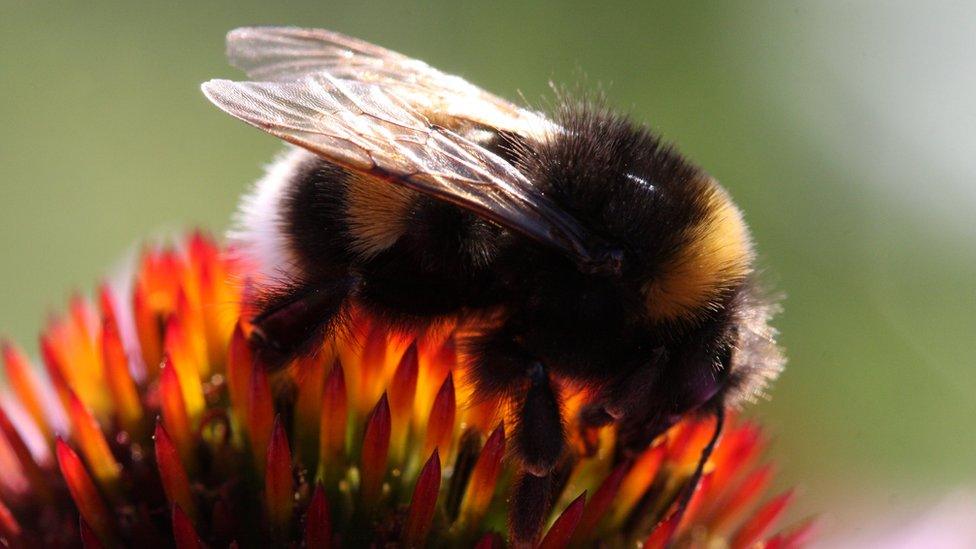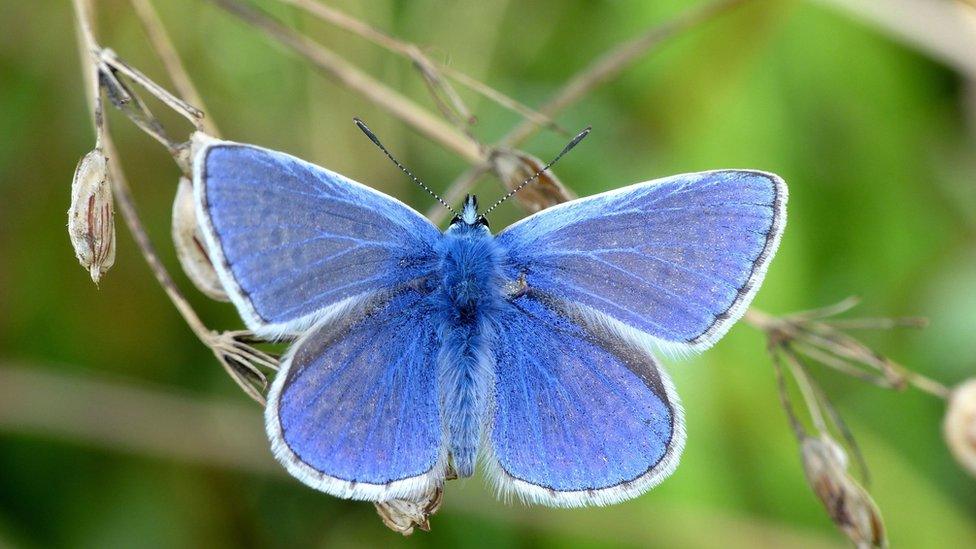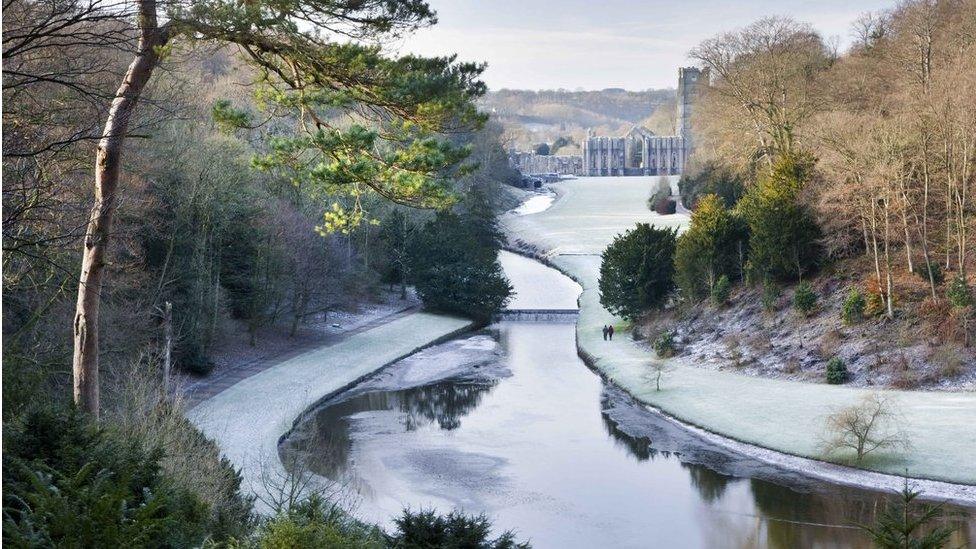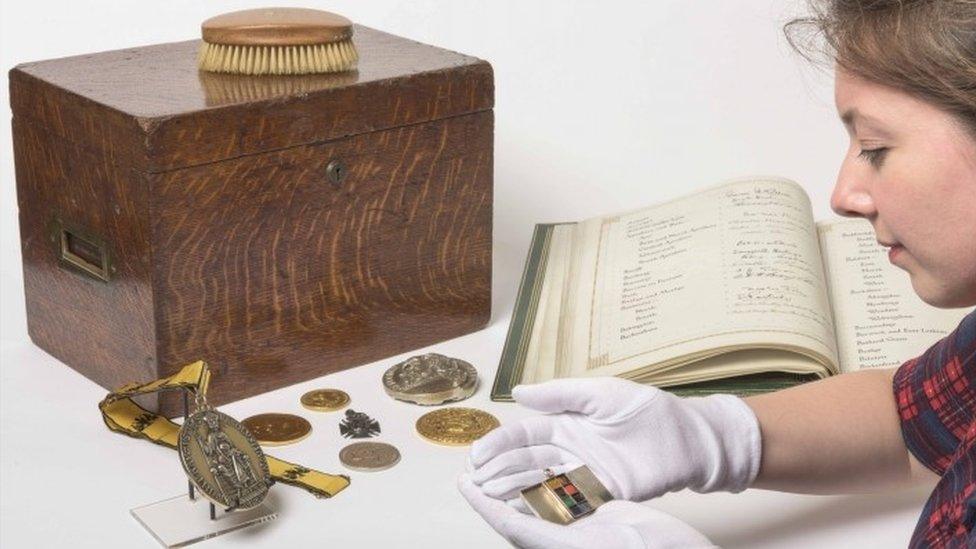Bumblebee numbers hit by 'unsettled decade'
- Published

The number of bumblebees in parts of Somerset dropped by 85%
Bumblebees and butterflies have seen their numbers plummet after another year of unsettled weather, according to a National Trust study.
The 10th annual wildlife report from the trust said mild winters and bad weather in summer created bad conditions for small plants.
But whilst insects suffered, grass growth rose, meaning a good year for livestock farmers.
Conservationists and farmers must work together, the trust said.
Warmer winter months and bad summers have become the norm, according to the report, which said the UK has not had a good summer since 2006.
Nature and wildlife specialist for the Trust, Matthew Oates, said: "2016 comes on top of an unsettled decade, with many species struggling in the face of climate change and more intensive farming practices.
"When you do get good weather during the brighter months of the year, it's almost inevitably short-lived and finished with something nasty.
"During the brightest months, we do seem to be getting more extreme weather events, most of which aren't nice."

Volunteers recording sightings for the Trust have seen 23% fewer common blue butterflies
Specific sites have now seen a big change in their wildlife, especially due to the surge in grass growth.
Observations at Lytes Cary, in Somerset, showed the number of bumblebees had fallen by 85% on the previous year as wildflowers that attract the bees in field margins were outgrown by grass.
At Purbeck, in Dorset, meadow butterflies also saw a drop in numbers, with volunteers recording a fall in sightings of marbled white numbers by 73% and 23% fewer common blue butterflies.
But the grass growth meant good hay and silage harvests for tenant farmers on Trust sites and improvements on other sites.
Among birds, in Cornwall and Devon rare cirl buntings saw a rise in numbers by 800% since 1989.
And the grazing conditions for rare-breed Longhorn cattle in the Lake District's Ennerdale Valley led to the right wet grassland habitat for marsh fritillary butterflies, with larvae numbers up 560% in 10 years.
Mr Oates said the effect of grazing on rare species signalled the need for conservationists and farmers to work together when it comes to managing the land.
Other areas saw mixed results for their wildlife.

Grey seals were one species not suffering due to the weather
At Blakeney Point, on the north Norfolk coast, the grey seal population went from 100 pups being born in 2004, to 2,342 born by January this year. The Farne Islands also saw 1,879 pups born in 2016, which was up on last year.
There was also a larger apple crop, especially in the south west, because of the warm autumn and rain late in the season. The extended growing season also saw better conditions for damsons, acorns and hazelnuts.
However, there were falls in the number of field voles, which could lead to problems for barn owls and kestrels who feed on them.
And whilst slugs have benefited from the mild and wet weather, gardeners have had to suffer the effects on their plants.
- Published23 June 2016
- Published26 December 2016

- Published5 September 2016
